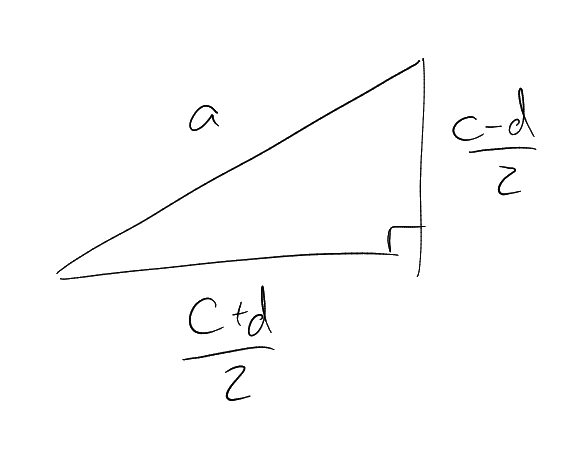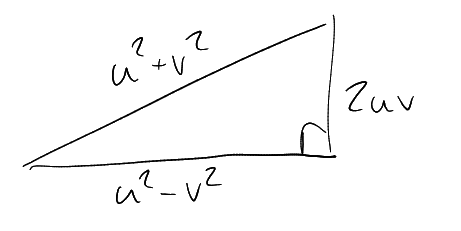1 Fermat’s Method of Infinite Descent
Definition (Rational, primitive triangle).
A triangle is rational if .
A triangle is primitive if
and are coprime.
Lemma 1.1.
Assuming that:
Then is
of the form
for some integers .
Proof.
Without loss of generality
odd,
even (work modulo ).
This then forces
odd.
Then
and note that all the fractions are integers. Also note that the product on the right hand side is a
product of positive coprime integers.
Unique prime factorisation in
gives that ,
for some .
Then ,
,
.
□
Definition (Congruent number).
is a congruent number if there exists a rational triangle
with .
Note.
It suffices to consider
square-free.
Lemma 1.2.
Assuming that:
Then is congruent
if and only if
for some ,
.
Proof.
Lemma 1.1 shows
|
|
for some ,
with .
Put
and .
□
Fermat showed that
is not a congruent number.
Theorem 1.3.
There is no solution to
for and
.
Proof.
Without loss of generality
are coprime, ,
.
If
then replace
by .
If
both odd then replace
by .
Then
are pairwise coprime positive integers with product a square.
Unique factorisation in
gives
for some .
Since ,
both
and
are odd.
Then consider:
|
|
This is a primitive triangle. The area is .
Let . Lemma 1.1
gives for
. Therefore we have
a new solution to ().
But so
.
So by Fermat’s method of infinite descent, there is no solution to
()
.
□
1.1 A variant for polynomials
In Section 1,
is a field with .
Write for the
algebraic closure of .
Lemma 1.4.
Assuming that:
Then .
Proof.
Without loss of generality .
Changing coordinates on ,
we may assume the ratios
are for
some
(Möbius map).
(where is a square
root of ). Unique
factorisation in
gives that ,
,
,
are
squares. But
|
|
So Fermat’s method of infinite descent, we get a contradiction, unless the degrees of
and
are zero. So
.
□
Definition 1.5 (Elliptic curve (temporary definition)).
Fact: is
naturally an abelian group.
In this course, we study
for being a finite
field, local field ()
or number field ().
Lemma 1.2 and Theorem 1.3 tells us that if
is , then
Proof.
Without loss of generality .
By a change of coordinates, we may assume
for some .
Suppose .
Put ,
where
are coprime.
Then
for some .
Unique factorisation in
gives that
are squares. Hence by Section 1.1, ,
so ,
so .
□


